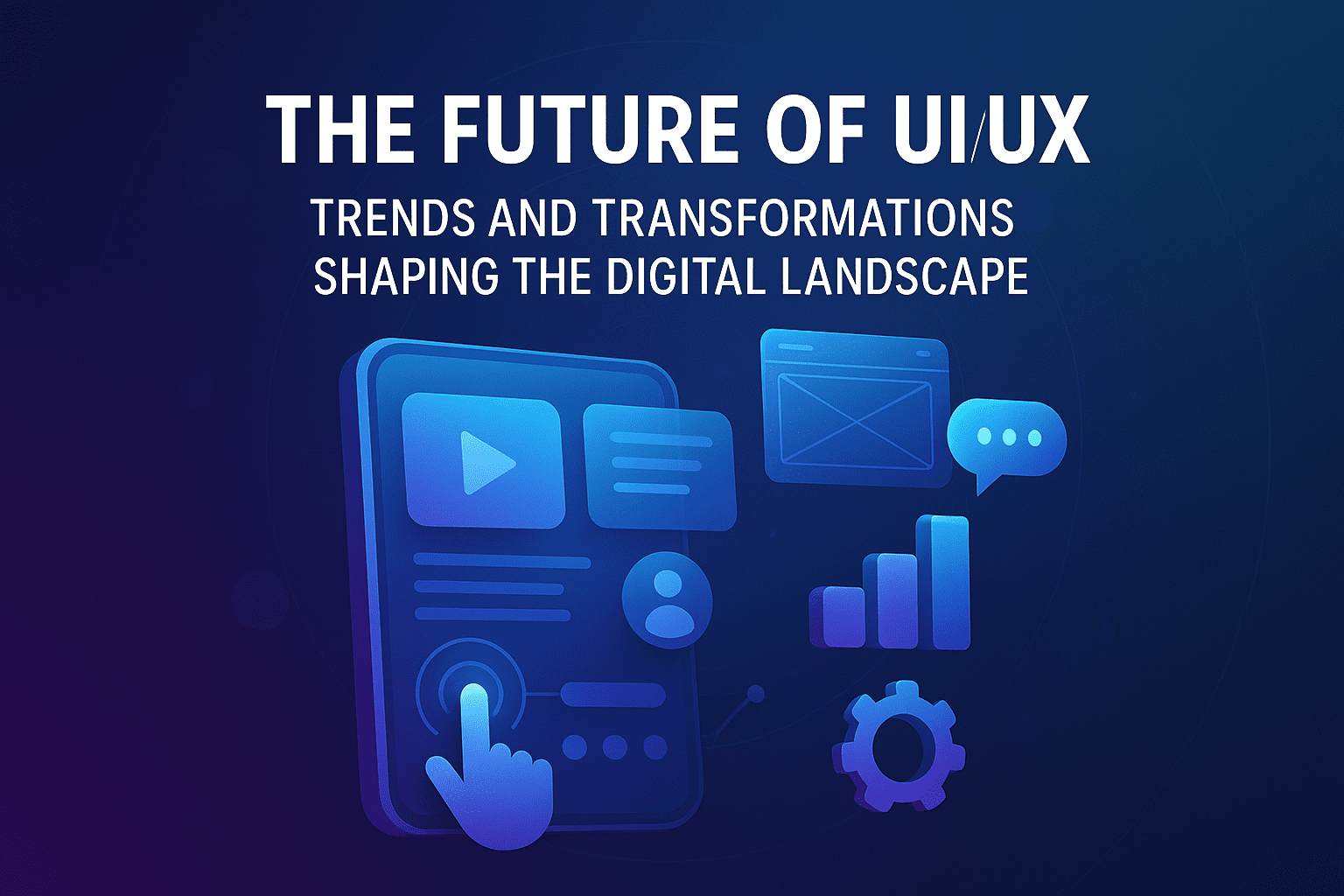The Future of UI/UX: Trends and Transformations Shaping the Digital Landscape

As digital experiences become increasingly central to our daily lives, the role of UI/UX developers is evolving rapidly. Today, user interface (UI) and user experience (UX) design go far beyond simple aesthetics or usability—they focus on creating immersive, adaptive, and deeply personalized journeys that anticipate and respond to individual user needs. This shift is reshaping how businesses connect with their audiences and how users interact with technology. In this comprehensive blog, we explore the emerging trends and transformative shifts defining the new era of UI/UX, and why investing in forward-thinking UI/UX expertise is more critical than ever for your business success.
1. Hyper-Personalization and AI-Driven Experiences
- Personalization as a Standard Expectation: Users now expect digital products to adapt dynamically and in real-time, offering content, layouts, and features tailored specifically to their preferences, behaviors, and contexts.
- Artificial Intelligence at the Core: AI technologies power dashboards that reconfigure themselves based on user interactions, microcopy that adjusts tone depending on context, and chatbots that act as intelligent, brand-aware digital concierges.
- Anticipatory Design: Modern UI/UX design doesn’t just react to user input—it anticipates what users want next, creating a seamless, almost “invisible” layer of intelligence within the interface that enhances satisfaction and engagement.
2. Immersive Interactivity and 3D Elements
- Dynamic 3D Objects: Moving beyond static visuals, 3D elements are now interactive and integral to the user journey, making digital experiences more engaging, memorable, and lifelike.
- Rich Microinteractions: Haptic feedback, spatial audio, and motion-enhanced cues respond in real-time to user actions, fostering emotional connections and building trust.
- Spatial Navigation: Interfaces are evolving to feel more like navigating a physical space, which is especially impactful in sectors like e-commerce, education, and entertainment, where immersive experiences drive deeper engagement.
3. AI-Generated and Automated Design Processes
- AI as a Creative Partner: Design tools such as Figma and Adobe Creative Cloud increasingly incorporate AI to suggest layouts, color schemes, and even generate entire branding systems, allowing designers to focus on high-level creative decisions and strategic curation.
- Accelerated Iteration Cycles: AI-driven workflows enable rapid prototyping, smarter user flows, and more innovative solutions, reducing manual effort and speeding up the design-to-development pipeline.
- Enhanced Creativity: By automating routine tasks, designers have more bandwidth to experiment and innovate, pushing the boundaries of what’s possible in UI/UX.
4. Universal Accessibility and Inclusive Design
- Accessibility as a Priority: UI/UX design now places diversity and inclusivity at its core, ensuring digital products are usable and enjoyable across different languages, cultures, and abilities.
- Disability-Centered Navigation: Features such as multi-language support, screen reader compatibility, and culturally sensitive layouts are becoming standard, making digital spaces more universal and empowering for all users.
- Legal and Ethical Imperatives: Beyond user benefits, accessibility compliance is increasingly mandated by law, making inclusive design a business and ethical necessity.
5. Advanced Motion, Microinteractions, and Storytelling
- Purposeful Motion Design: Animations and microinteractions are no longer decorative—they guide users intuitively through complex processes, provide feedback, and enhance overall usability.
- Interactive Storytelling: Modern websites and applications use dynamic content, gesture-rich interfaces, and multi-layered animations to create compelling, story-driven journeys that captivate users and encourage repeat visits.
- Balancing Performance and Experience: Designers carefully balance rich interactions with performance optimization to ensure fast load times, efficient battery use, and accessibility for all users.
6. Innovative Layouts and Minimalist Aesthetics
- Bento Grid Layouts: Inspired by Japanese bento boxes, these layouts use visually dynamic, flexible sections to create strong visual hierarchy and adapt fluidly to any screen size or device.
- Minimalism with Personality: While clean and uncluttered design remains popular, it’s now paired with bold typography, unique illustrations, and playful elements that express brand identity and foster emotional connections.
- Whitespace and Clarity: Thoughtful use of whitespace and simple navigation structures improve readability and reduce cognitive load, enhancing user satisfaction.
7. The Evolving Role of UI/UX Designers
- From Creators to Curators: As AI and automation take over repetitive design tasks, UI/UX professionals are increasingly acting as curators and strategists, focusing on vision, ethics, and the human touch in design.
- Cross-Disciplinary Collaboration: Designers work closely with business stakeholders, developers, and data scientists to align user needs with business goals and technological possibilities.
- Championing Ethical Design: With growing awareness of digital wellbeing, privacy, and inclusivity, UI/UX designers are at the forefront of creating responsible and user-centric digital experiences.


